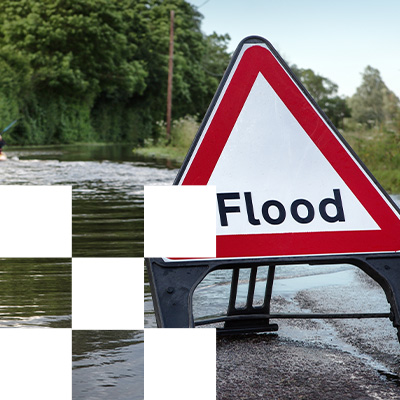How spatial intelligence can empower your sustainability strategy
More and more organisations are discovering that location is where the answers to their sustainability challenges lie.
Sustainability is at the top of every organisation’s agenda. But while there are risks to prepare for, there are also opportunities to seize – and Environmental, Social and Governance (ESG) credentials to be assessed and reported on.
As you know, there’s a lot to consider. A lot to juggle. But how do you create a sustainability strategy that effectively meets these challenges?
The answers lie in the present and future insights only accessible via spatial intelligence.
Identify risks and opportunities
Geospatial data can reveal a wealth of information relevant to any industry, sector, or business for which geographical location is an interest. The places, properties or physical assets that you’re responsible for.
What geospatial data can do is provide an intricate picture of the critical environmental (human and physical) forces that influence your business. That intel is exactly what you need to negate, deflect and circumvent environmental risks before they arise. It also casts light on potentially lucrative opportunities.
To learn how to use spatial intelligence to:
- - Identify and predict location-specific risks and opportunities
- - Understand and track sustainability-relevant progress
How might that apply to my business?
Let’s put that into context. Say you work for a Housing Association. Armed with geospatial data, you can pinpoint the properties in your portfolio that are susceptible to flooding. Or highlight where work is needed to mitigate threats from climate change during the life of the investment loan or mortgage. Or even recognise for better surface water management by improving flood defences or retrofitting sustainable drainage systems (SuDS).
Or maybe you’re an insurer? Localised crime statistics can reveal hotspots and patterns that can greatly improve the accuracy of your pricing and understanding of risk exposure.
Those are just two examples. Available datasets range all the way from soil surveys, waterways, green spaces, and cabling and pipelines to land boundaries and much more.


As Emapsite’s Paul Gibson puts it, “This approach really relates to any company that owns almost any land or physical assets today – or is planning to move into new geographic areas tomorrow.”
Location Matters
In their ‘Location Matters’ report, The World Economic Forum (WEF) recognises that spatial intelligence is vital for any business with ESG goals.
“The collapse of nature is a global challenge, but its impacts and the remedies will vary from place to place and business to business. Developing solutions, understanding risks and transparently reporting results will require the use of spatial intelligence for nature and climate.”
The report also offers actionable advice on how to employ spatial intelligence gleaned from geospatial data to empower your sustainability strategy.
According to an expert
When recently asked how his company is helping sustainability policymakers like you empower their sustainability strategies, Emapsite’s Managing Director Rich Pawlyn said, “We’re essentially providing them with the tools and insight that enable them to make the necessary decisions. And we’re doing that through a growing number of really powerful, highly specific datasets.”
On the evolution of the market, he noted, “There’s a realisation that, while the effects of climate change may be negative, the response can be positive. So when we help an organisation to predict change and assess impact, we can also help them to identify opportunity. We’re facilitating a much longer-term view rather than helping them simply audit where they are now.”
He defined his own business’s commitment to sustainability as, “Underpinning all of our products and our positioning is our desire to make authentic, lasting change to how we operate as a business. It’s got to be real, harmonious and consistent across everything we do.”
Access geospatial data with ease
Emapsite’s geospatial data mapping products put the sustainability strategy-empowering capability of geospatial data at your fingertips.
Easy to interpret at quick glance, the data you can access will be specific to the nature, needs and strategic aspirations of your business.
And you choose how. Whether that’s by integrating the data with an app, viewing it on your browser, or linking it direct to your systems with an API, the insights you need to empower your sustainability strategy will become available where you need them at the click of a button.
Unlock the five key sustainability focus areas
There are five key sustainability-specific areas to consider. Learn about them and a range of geospatial data packages that will help you empower your sustainability strategy in our FREE exclusive whitepaper. Click here to visit our ESG page and download your copy.
Latest News

Future-proofing Assets Against Flooding in Britain
A recent investigation by The Guardian has revealed a sobering reality: millions more properties across Britain are now at risk of flooding as climate change intensifies. This makes it more crucial than ever to act - and to ensure those actions are guided by reliable, high-quality data.
Read Full Article-
Why address data is the unsung hero in the UK’s new-build recovery
Read Full Article -
Decoding the OS National Geographic Database: A Game-Changer for Utilities
Read Full Article
